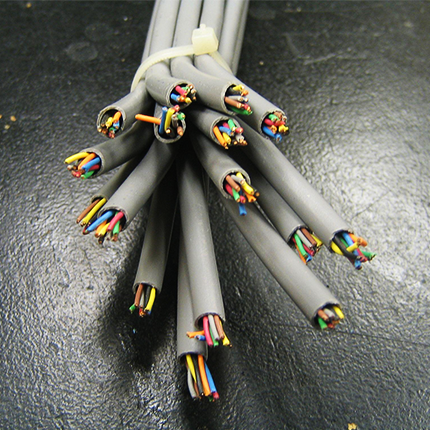I got the T460 refurbished and I really didn’t want to run Windows 10 on it. I last used Linux for any real length of time a good 20 years ago, so I’m pretty inexperienced with it at this point and I had to figure out how to install it myself.
They made it unreasonably difficult to first install an OS from a USB stick. I had to go into the BIOS, turn UEFI to legacy, turn off secure boot, reboot to boot from the USB stick, install Mint, then turn legacy back to UEFI to get it to boot from the hard drive. This took about 2 hours of trying to figure it out by doing a lot of forums reading.
I do not blame the Mint community or the Linux community as a whole. There is absolutely no reason that it should have been that hard to install Mint on that notebook.
I don’t even think getting into the BIOS once time should be necessary, but changing a BIOS setting so you can install the OS and changing it back so you can run the OS off the internal drive is just ridiculous and I find it hard to believe Lenovo couldn’t have just made it easier. I’m fairly convinced this was intentional on their part.
I’m not an IT professional or anything, but I know enough to figure this stuff out with effort, but it shouldn’t have taken that effort. It should have been almost plug-and-play. This is 2024. The notebook isn’t even 10 years old.
Is there actually a good reason for this or are they just kissing Microsoft’s ass?
This has nothing to do with Lenovo perse, this is the average experience for every laptop I’ve owned which had Secure Boot turned on.
You know what is fun? Having your Dell basically bricking because Fedora starts shipping a new version of shim-x64 which completely fails the UEFI handover to bootloader. Leaving you unable to boot at all, so no chance of reaching rescue mode. Then more fun times of booting a live environment from a usb stick after going through the same hoops you went through, finding out how to decrypt your BTRFS partitions, manually mounting and chrooting them so you can finally downgrade the offending package.
Linux and Secure Boot just isn’t a great combination if you ask me.
That sounds pretty awful, sorry that you went through that.
And that’s just the quick summary, first time I just restored a backup. But as my system immediately failed again after updating I started digging and came across some obscure posts of Lenovo users (ok, maybe Lenovo isn’t that great with implementing Secure Boot after all 😋) having the same issue and devised that rescue plan. Quite the nightmare indeed, but at the other hand it also taught me some new skills. After going through the same routine on each update of that package I ended up excluding it from updates in DNF.
Don’t now if the issue was ever resolved, I’ve since stepped away from Fedora as I’ve just had too many of these weird issues with it on each new release. Creating bug reports and the accompanying warm feeling of helping to improve the Linux ecosystem is nice, but in the end I just need to get work done.
It’s impossible to make the situation with BIOS easier. Incorrect boot order and secure boot are enabled by default for security and Windows compatibility reasons. Though I never heard that it’s required to turn on legacy mode and change it back. Probably it’s a highly model-specific thing. And btw secure boot is Mint’s fault. It just doesn’t support it yet
It’s not even machine specific. UEFI vs legacy bios boot mode is universally supported in all but the latest systems. If OP had to switch to legacy boot mode then they probably made the USB “incorrectly”. You’d run into the same issue on windows if you made the USB boot drive for legacy bios mode.
Idk. I use Etcher and it never asks for any modes. Rufus is different though
I’d love to know what I did wrong if you can tell me. I used Etcher like the instructions on Mint’s website told me to.
And btw secure boot is Mint’s fault. It just doesn’t support it yet
Not the case. I’m typing this on a Surface laptop running Mint with Secure Boot enabled. Even the bootable Mint USB can be run with Secure Boot turned on.
Hmm then I guess I made a mistake
secure boot is Mint’s fault.
Well now I’m just surprised considering this is a 2016 notebook. They should be supporting a feature that old, shouldn’t they?
Some distros support it but it’s only like 4 or 6 of them. I guess it’s really hard to support and maintain such feature
I had to go into the BIOS, turn UEFI to legacy, turn off secure boot, reboot to boot from the USB stick, install Mint, then turn legacy back to UEFI to get it to boot from the hard drive.
That is ridiculous and it does sound like a Lenovo problem.
I’m running Mint on a Surface Laptop (which was difficult to install because Microsoft), but getting Secure Boot working only required changing the UEFI settings to allow non-Microsoft Secure Boot certificates. With that set Mint boots just fine both with Secure Boot enabled and disabled. So do USB installation ISOs.
Secure Boot can still be a pain. To get Virtualbox working with it enabled required signing several kernel modules which took a while to figure out.
Mint is great though. After distrohopping for years I finally decided I wanted to just use the OS and GUI, not play around with them and I came back to Mint. The latest versions of Mint just work and work for years once they’re installed. For me, going back to Windows (especially W11) feels like punishment. I hope you enjoy the switch.
Admittedly, I’ve only been able to play with it on and off today, but I am really liking it so far (except Firefox, which apparently no longer has a compact mode). I’ve had to use Macs for years for work reasons, but I don’t have to anymore and I said to myself that when my ancient Macbook died, I would replace it with something that runs Linux. MacOS is okay, not terrific (I hate how much RAM it uses though). I don’t mind using it, but I am not going to pay Apple’s prices now that I don’t have to just because it’s less annoying than Windows. So Linux is the perfect answer!
MacOS is okay, not terrific (I hate how much RAM it uses though).
On that note, I’ve been amazed how well Mint works with just 8GB of memory. I’ve had Firefox and Chrome running with plenty of open tabs, Thunderbird, Libreoffice Calc, and a half dozen other programs open while running W10 in Virtualbox. Mint just takes it in stride.
Wow what a ride. Congrats on making it work, I’m not sure if I wouldn’t have given up at some point. Great job!
About kissing M$'s ass, don’t get me started on updating the BIOS on a HP Laptop, they require you to do that in Windows cause it’s the only way to get their downloader to run. So it’s not only Lenovo’s Laptops that don’t play nice with Linux.
I didn’t even want to take a chance with an HP considering how fucked up their printers are.
UEFI looks like another over-complicated proprietary shit that make PC more and more locked.
Pretty much from what I can tell.
Well done. It’s a Lenovo issue. Had to do the same thing recently for a friends laptop and did the same dance.
I have some IT background so kind of knew what to look for but it still was a pita.
It’s just so stupid. Obviously other notebooks don’t have this issue. Some people are blaming Mint for not doing anything about it, but I’m still blaming Lenovo mostly.
That sounds extremely infuriating! Regarding Lenovo and Linux Mint, I actually had a very good experience with them a little over a year ago. I bought a new IdeaCentre 5i pre-built desktop tower and had zero issues installing Mint on it. All I had to do was press F12 and select to boot from the bootable USB to install, no screwing with the BIOS or anything. But I’ve never tried installing Linux on a laptop. I only use desktops.
It was so stupid. F12 should have been all it took, but it didn’t even recognize the USB drive existed.
As someone who also installed Mint on a Lenovo, I feel your pain. The only difference is that I was aware of the BIOS setting before I did the install because I’d read some forum posts preparing myself for the install.
I totally agree. I am an IT Profe and it’s still very irritating to have to jump through these hoops. Plus each manufacturer has a different key you need to press to access the bios. Sometimes the same OEM will have different keys on different models.
So you try the normal ones which don’t work and then have to Google the model number to try find out which key to hold.
Frustrating and time consuming. And definitely makes it very difficult for the average user to install Linux.
I sometimes think Microsoft did it on purpose to hinder Linux installs and then disguised it as “security”.
It’s not really “security” if you can turn it off is it?
are they just kissing Microsoft’s ass?
This. 100%. It’s why I don’t understand folks recommending Lenovo laptops to run Linux on. Lenovo is in bed well Microsoft and caters to whatever they want. SecureBoot, modern standby, etc. We need more vendors supporting open source firmware like Coreboot.
Edit: feel free to refute me instead of just down voting.
That’s what you get when you buy Lenovo. It can’t even run Windows properly most of the time how did you expect it to run Linux?
Seriously if you go into any large company and ask why they don’t use Lenovo they’ll simply tell you that the failure rate of those machines is way to high to be worth it. Like order 50 and only 10 are in working condition after 2 years… or a simple USB 3 cable running along the computer will make it slow because there isn’t enough shielding on the machine and the high frequency of those cables interferes with your storage controller / NVMe.
how did you expect it to run Linux?
Because I asked in this community and got a bunch of people who said they ran Linux on it and it worked just fine? Which it does now that it’s been installed.
Hardware recommendations are really hard, brands to a lot of shit and there are a LOT of small details that make it so a small revision on the same model can make or break compatibility with any OS… even worse for Linux. Windows has tons of specifics hacks to work on specific hardware and they aren’t pretty.
For me, personally I always got the best result with HP EliteBooks from 2 or 3 generations bellow the current one and the latest Debian. But again, that’s just personal experience, nobody can guarantee you that you won’t pick a very specific EliteBook with some awkward detail and things will fail.
I’m surprised HP notebooks are trustworthy at this point.
Depends on the line… the high end enterprise products (EliteBooks) are very solid and good, they also provide very good servicing, every piece of those machines is replaceable even screws have serial numbers and can be ordered from HP.
ProBooks are a mixed batch, some are decent others are total garbage. Consumer grade HP mostly follows the same trend, if you go for machines that are “Apple-priced” they’re good, otherwise crap. Still not as crap as Lenovo became after China.
I doubt I’d be able to afford one of those. I got this because it was $200 refurbished.








